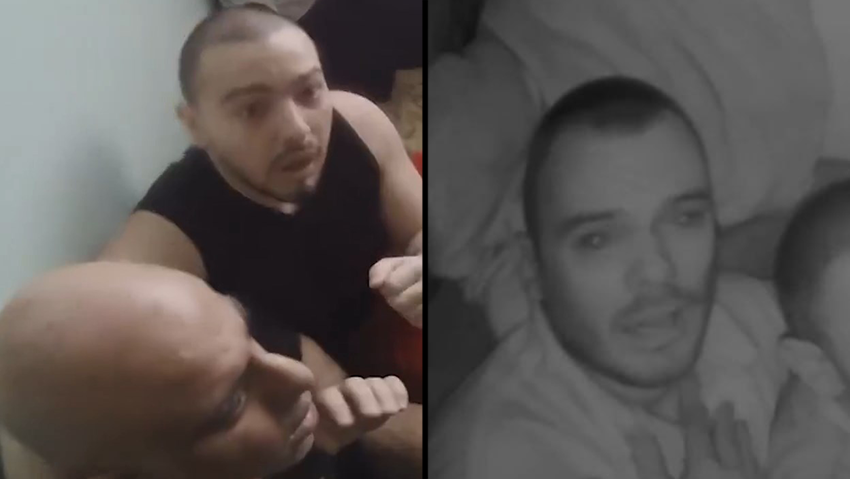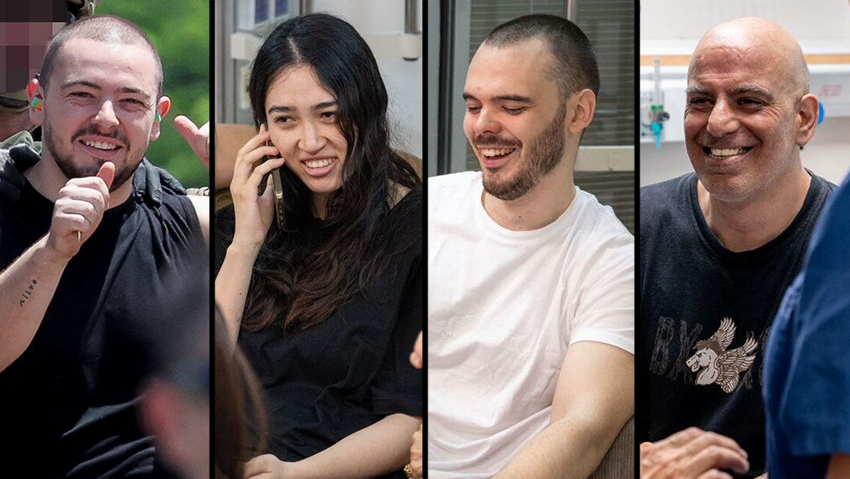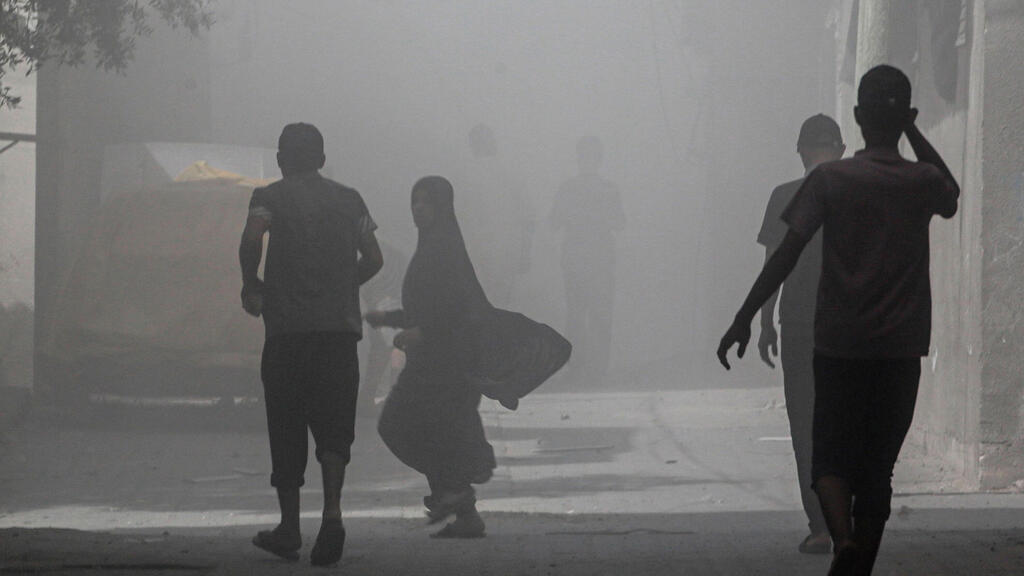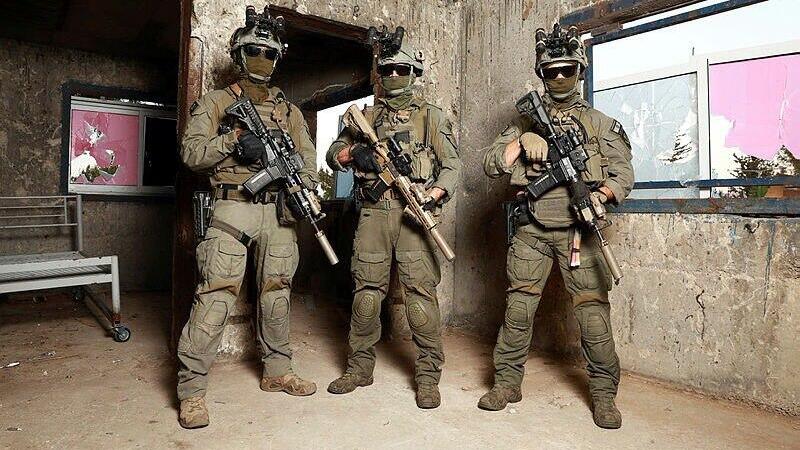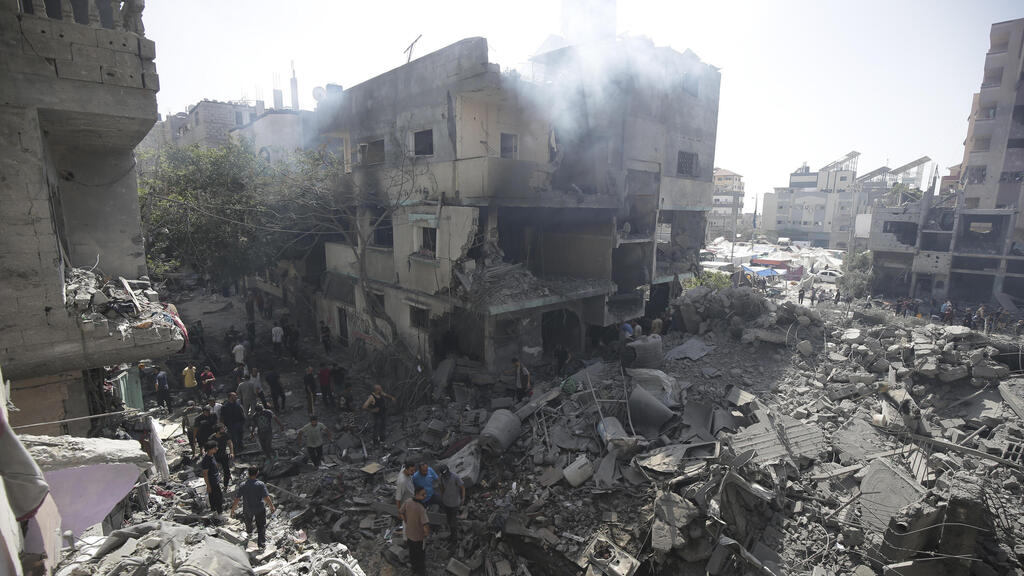Getting your Trinity Audio player ready...
Less than a week after "Operation Arnon," the Jewish Chronicle, the largest Jewish newspaper in Britain, revealed dramatic details about the mission, which began well before June 8.
On May 12, Israel received intelligence about the whereabouts of four hostages in the Nuseirat refugee camp in the Gaza Strip. From that moment, every branch of Israeli intelligence focused on pinpointing their exact location. Undercover special forces Mista’arvim units were disguised to blend in with the local population and were deployed primarily in the Nuseirat market.
Their mission was to gather intelligence from locals and verify information from interrogated terrorists. Additionally, aerial observation and advanced technological methods were employed to collect data.
After 19 days of intensive collaboration, the intelligence units successfully obtained precise information on the hostages' location. It was found that the hostages were held in two separate buildings within the same area. Noa Argamani was located on the first floor of one building, while the other three hostages were held 800 meters away, on the third floor of another building.
At the beginning of the month, days before the operation, this dramatic intelligence was presented to the war cabinet. IDF Chief of Staff Herzi Halevi and Shin Bet head Ronen Bar were tasked with developing a rescue plan, keeping the information under strict secrecy. Even senior commanders in Gaza were not informed. The war cabinet discussed options, and preparations and training for the operation began.
To further verify the information and lay the groundwork for the operation, another team of undercover soldiers, including women dressed in hijabs and long black dresses, was sent to the refugee camp. They arrived in two old, inexpensive cars loaded with household items typical of displaced families in Gaza. When questioned by camp residents, they claimed to have fled Rafah due to "deadly Israeli shelling" and decided to move to the central Gaza Strip. The undercover agents identified the building where Noa Argamani was held and offered a local a large sum—three times the usual rate—to rent a home in the same building. The locals obliged and found them a large house near Argamani's location within hours.
A few days later, after settling in and familiarizing themselves with the area, including shopping at the market, the agents realized they had not aroused any suspicion. They then commenced their mission to confirm the hostages' location.
They split into two teams. One team consisted of a man posing as a typical local Gazan and a woman in a long black dress and hijab. They walked down the street toward the Al-Awda Medical Center, 200 meters from where Noa was held and several hundred meters from where the other three hostages were kept. "They walked with full confidence, as if they were on a street in Tel Aviv," the report noted. To avoid suspicion, they occasionally stopped at street stalls, expressing complaints about "the difficult situation in Gaza." They spoke fluent Arabic with a perfect Gazan accent. Four armed undercover agents followed them to provide protection in case of unexpected chaos.
The second team verifying the hostages' location included four female soldiers dressed as Gazan women, one pretending to be pregnant. They carried bags full of groceries and walked in pairs, adhering to cultural norms that prevent young Muslim women from walking alone. They advanced toward a nearby residential building where Shlomi, Andrey, and Almog were held on the third floor. This team was also accompanied by four armed undercover agents. Meanwhile, five undercover agents stayed at the rented house to ensure it remained secure and that the teams were not exposed. Three hours later, at the pre-arranged time, the teams returned to the rented house and began processing the collected information. They confirmed that the four hostages were held in two different family homes in Gaza, and this critical information was relayed to Israel.
The cabinet decided to act. Twenty-eight Yamam commandos began training on two specially constructed models replicating the buildings where the hostages were held. After three days of training, the Yamam commander informed Chief of Staff Halevi that they were ready. Defense Minister Yoav Gallant was briefed, followed by Prime Minister Benjamin Netanyahu. The political leadership approved the operation, and three days before the daring rescue, on June 5, the undercover agents were ordered to leave the refugee camp discreetly, while a few fighters stayed behind to ensure the hostages were not moved.
Only at this stage were senior IDF commanders and additional cabinet members informed about the operation. On Friday morning, 28 Yamam commandos began moving in two teams toward the two buildings in the Nuseirat refugee camp. To maintain the element of surprise, the unit traveled in two trucks. Just before 11:00 am, moments before the command to execute, the operatives arrived precisely at the two targets and waited for the signal.
Using advanced surveillance technology and with the support of Israeli Air Force aircraft, ground forces were informed that the area was "clear," with no suspicious movements near the buildings. Real-time updates from the alleys of the refugee camp were transmitted to command and control centers in Israel, where senior officials supervised the operation.
At exactly 11:00 a.m., the commandos received the order to proceed. They stormed the two buildings simultaneously and in full coordination, preventing the terrorists from harming the hostages and ensuring the success of the operation.
Israeli soldiers eliminated the terrorists guarding Noa Argamani and rescued her from the apartment unharmed within six minutes. She was then flown back to Israel by helicopter. While Noa's rescue went smoothly, the extraction of the other three hostages, held on the third floor of a building 800 meters away, became complicated.
They were held in the home of Dr. Ahmad Al-Jamal, a Hamas-affiliated doctor, along with his son Abdullah, a journalist who wrote for Al-Jazeera. Part of the rescue team used a ladder to enter directly into the room where Almog, Andrey, and Shlomi were held, while others took the stairs from the main entrance. However, Chief Inspector Arnon Zamora's team, which led the raid, encountered heavy fire from around 30 Hamas terrorists inside the apartment. The terrorists used machine guns, threw grenades, and even lobbed one at the forces. Commander Zamora was killed in the operation, which was later named in his honor.
The presence of 30 terrorists was unexpected, as the undercover agents hadn't provided this information, likely because the terrorists had arrived that morning or the night before to bolster security around the hostages. Despite this, the experienced Yamam commandos continued to fight with determination at close range, joined by other team members waiting outside the apartment. The three hostages had to hide in the apartment's bathroom, protected by several soldiers during the intense battle. Leaving the apartment was impossible due to the heavy, unexpected gunfire.
After a prolonged fight, the Yamam fighters eliminated all the terrorists and rescued the hostages. Simultaneously, they attempted to save Commander Zamora's life but were unsuccessful. Soon after, dozens of terrorists emerged from tunnels around the building, firing machine guns and RPGs at the forces. The commandos began their extraction, some carrying Zamora on a stretcher, running through smoke-filled alleys under constant fire.
Their rescue vehicle was hit by two RPGs, prompting the operation commander to activate "Plan B," a prearranged daring extraction under heavy enemy fire, covered by Israeli ground, sea, and air support. Hundreds of paratroopers, Golani, and Givati soldiers stormed the refugee camp on foot, engaging Hamas terrorists at close range while they were also attacked from the air and sea. Air strikes hit the terrorists just ten meters from the Israeli forces.
The reinforcements and air support isolated the battle zone, creating a safe exit route for the main force accompanying the hostages. After an extended firefight, the soldiers neutralized all threats and safely evacuated Shlomi Ziv, Andrey Kozlov, and Almog Meir Jan.
Hamas claims that 274 Palestinians were killed during the rescue operation in the crowded refugee camp streets. In contrast, the IDF reports that 104 Palestinians were killed or injured, all of whom were terrorists or armed civilians who opened fire at the forces.


